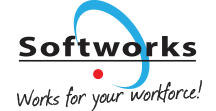Over the last few years, HR leaders have been challenged like never before. From the sudden shift to remote working to mass resignations, from skills shortages and recruitment challenges to the current cost of living crisis. Add to this economic instability and political turmoil. So, what does this mean for 2023? What will be the focus for HR leaders in 2023?
Top priorities for the last few years have included the areas of flexible and hybrid working, employee well-being, diversity, equity, and inclusion (DEI), recruitment, employee engagement, and HR digital transformation.
These priorities will still be extremely important in 2023 but let’s look at some of the other HR priorities and trends that have come to the fore due to the ever-changing world of work.
According to Gartner’s annual survey of more than 800 HR leaders, the top of the list this year is leader and manager effectiveness but HR leaders will also prioritize change management, employee experience, recruiting, and the future of work.
The report states:
HR leaders must manage investments in people and technology, cultivate a positive culture and employee experience, and transform HR to be more automated and digital — all while new employee expectations are impacting retention and attraction.
The top 5 priorities according to their survey are as follows:
Workforce Management and Planning for 2023
The world of work will continue to evolve in 2023, requiring even more people-first approaches to overcome the challenges of today and those coming down the line. There will be a continued demand for things like improved employee engagement and experience, employee well-being and mental health, workplace flexibility, talent management, DEI, and leadership development but what else are HR leaders focusing on right now? How will they? These are some of the areas that HR leaders will be looking at to help them navigate current and future workforce management and planning challenges.
Retaining and investing in your current talent
In the same way, it costs much more to attract a new customer than retain a current customer, it costs more to attract new talent than to retain current talent. HR leaders know this and are looking at their valued employees in the same as they look at their valued customers so this will be a priority for many. By investing in your current talent, you are showing that you care. This can be done by providing upskilling opportunities and supporting them in learning activities that will assist them to further their career in your organization. This is a win-win for both the employee and the business. It enables employees to reach their personal goals and helps employers overcome skills shortages and retain key employees.
Engaging younger employees
According to a Gallup Poll “Quiet quitters” make up at least 50% of the U.S. workforce. Quiet quitting emerged in the early 2020s, fuelled largely by social media. It means doing the minimum requirements of your job and putting in no more time, effort, or enthusiasm than absolutely necessary.
According to Gallup, U.S. employee engagement took another step backwards during the second quarter of 2022. The percentage of engaged workers stayed at 32% but the percentage of actively disengaged increased to 18% up from 13% in 2019. Gallup also found that the workplace has gotten worse for younger employees. They found a decline in engagement and employee satisfaction among remote Gen Z and younger millennials.
Since the pandemic, many younger workers are not feeling cared about, and feel they don’t have opportunities to develop. When organizations fail to look after their workforce, their workforce becomes increasingly disengaged. Retention efforts will be a huge focus for HR leaders and their organizations in general.
Quiet quitters
Engaged workers
Disengaged workers
Employee “total” well-being focus
Many organizations have been prioritizing a workplace culture that promotes a positive and healthy employee experience that focuses on the mental and physical health of employees. We now need to add to this how the economic situation and rising living costs are affecting employees’ well-being. According to results from the American Psychiatric Association (APA) Healthy Minds Monthly Poll, Americans’ worries over the economy have intensified, with 87% indicating they are anxious or very anxious about inflation. In the UK employees are becoming so anxious about the cost-of-living crisis that is affecting their job performance. According to a Chartered Management institute Survey of over 1000 managers and team leaders, 71% said they had seen evidence of the crisis increasing stress and anxiety for employees.
Of these, 93% said it was affecting employees’ productivity. That amounts to 66% of all the managers surveyed. While employee well-being has been getting good attention and focus, HR leaders will now also need to look at financial well-being. According to CIPD money worries are affecting 47% of UK employees and although around half of the employers do have a financial well-being policy in place, only 11% are actively focusing on it as part of their overall HR and well-being strategy. In 2023 HR leaders will be moving towards a proactive approach to well-being and resilience that includes developing a more holistic employee well-being approach focusing on mental, physical, and financial well-being.
HR & Workforce Management Technology
As technology continues to evolve at a rapid pace, we are experiencing more automation in the workplace than ever before. Investment in HR technology will continue to be a top priority for HR leaders. Adopting digital HR tools to enhance employee experience and engagement will continue but there will also be more focus on improving operational performance through data, analytics, reporting, and automation. Many organizations have inadequate systems and technology to effectively manage their workforce and are moving to all-in-one workforce management systems that can assist with managing and optimizing employee scheduling and rostering, remote and hybrid working, skills, and training while at the same time driving efficiencies, and reducing costs.
6 benefits of using an automated system for workforce management and planning
The right HR and workforce management technology enhances business functions, improves productivity, and makes HR processes run more smoothly. By automating manual tasks and reducing administration for HR teams, you are giving them more time to implement and support HR strategy and focus on the priorities that can assist the organization to reach its goals.
Summary
In this blog, we have looked at some of the HR Leader priorities and trends for 2023. As every organization is different and the world of work is changing at a rapid pace and fundamentally changing the way we work, there are other areas coming to the fore.
Some of these are managing complex workforce ecosystems that go beyond permanent employees, the use of algorithmic managers for hiring, firing and training workers and increased investment in deskless workers to stop them from leaving front-line roles.
HR leaders will need to continue to be innovative when coming up with new strategies to deal with the ever-changing world of work. They will need to build positive experiences to engage and in turn retain their diverse, resilient, and healthy workforces. HR leaders can make an incredible impact on organizations if adequately enabled, therefore they will need to ensure they have the right technology to assist them to overcome the challenges and seize the opportunities that 2023 has to offer.







